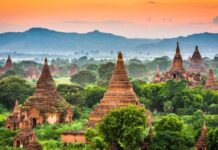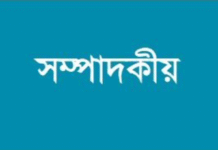
When Rohingyas first began entering Bangladesh back in 1978, the international community put pressure on Bangladesh to allow them entry. They also said that they should not be repatriated forcefully. When thousands of these displaced persons arrived at the border, it was not possible for the border guards to push them back. Within two months 200,000 refugees entered Bangladesh through the Cox’s Bazar-Burma border. They were initially kept at temporary camps near the border. The camps spread from the banks of the river Naf, along Cox’s Bazar to Naikhangchhari in Bandarban.
In 1978 Bangladesh was only seven years old. It had just undergone a political calamity. Before the unrest could settle in the country, Ziaur Rahman took over as president. The country’s economy was shaky at the time. Providing food and shelter to 200,000 refugees was simply beyond the capacity of the country. We coped during the first month by providing them with relief materials from the district. Then further material was sent in from the other districts. After a few days, foreign aid began to arrive, first from the International Red Cross and then from various other international government and non-government agencies. Then there was the United National High Commissioner for Refugees (UNHCR).
The indefinite stay of the Rohingya refugees was hardly a favourable situation for Bangladesh. On top of that, there was the question of security. Not all the Rohingyas were helpless innocents. Among them were those vying for a separate Arakan state. Many of them were armed and would launch clandestine attacks in Arakan. We in the local administration had been informed that if the Rohingyas stayed too long in the camps, they would even carry out their secret political activities here.
In view of this situation, we at the local administration advised the government not to keep the Rohingyas too long here, but to arrange for their repatriation. This would only be possible through talks with the Burmese (now Myanmar) government. The government accepted our recommendations and towards the end of 1978 held discussions with the Burmese government. First of all ministerial level talks were held in Dhaka. Next, the Burmese home minister and his delegation visited the Rohingya camps in Cox’s Bazar and talked to the refugees. As deputy commissioner, I received that delegation and accompanied them to the camps.
The third and last interaction was in the town Mongdu of the Arakan state, just a couple of miles from the border. The Bangladesh delegation was led by the home minister and I was a part of the team. The Burmese government signed an agreement for unhindered return of the refugees. The place for the repatriation was fixed at the Ghundum border post and the time for the first phase of repatriation was to be mid-1979.
However, two problems arose. One was from the refugees themselves and the other from UNHCR. Certain politically motivate elements among the Rohingyas spread the rumour that they would be persecuted when they returned to Arakan. They demanded assurance of protection and rehabilitation from the international agency. And UNHCR put pressure on the government, not to repatriate any refugee who was unwilling to return.
The administration had a tough time tackling with the hindrance to repatriation created by the anti-repatriation groups. At one point of time, certain unruly elements among the Rohingyas attacked the government officials and the police had to open fire to bring the situation under control. A few Rohingya refugees were killed. The troublemakers fell silent then and help back from hindering the return process. But then trouble broke out again when the Rohingyas gathered at the Ghundum post, ready for the first phase of repatriation.
On the night before the repatriation, a large number of Rohingyas attacked the on-duty police with sticks and sharp weapons, and snatched away their firearms. They demanded an immediate halt to the repatriation and informed the local Ukhia police station about this.
I was in Cox’s Bazaar that night. The police super and I arrived at Ukhia at midnight. We went to the Ghundum police camp along with a platoon of armed police. The police in the camp were without arms and began telling us how they were caught in the ambush unawares. We told the so-called spokesperson of the Rohingyas that we needed to meet his leaders. After all, the refugee commissioner was trapped in the camp.
The spokesperson said we should use the radio telephone of the police camp, now in their control. We talked two hours over the phone and finally persuaded them to allow me and another official to enter the camp and bring away the refugee commissioner. They also agreed to return the police firearms, but on condition that repatriation would be halted. They asked for assurance that they would not be punished for snatching away the arms.
I agreed to the conditions. My main concern was the safety of the refugee commissioner. It was imperative to rescue him and to get back the firearms. I entered the camp in the early hours of the morning and first rescued the refugee commissioner. They had locked him up in a small hut. The refugee commissioner expressed his anger at the repatriation, saying they should not be sent back against their wishes. I led him out, laughing aloud. The rebels had returned the arms to the police and in keeping with the conditions I said I would lead the Rohingya families gathered there, back to Cox’s Bazar. The Rohingya families, 40 persons in all, climbed into a bus and we started for Cox’s Bazar. We were escorted by two trucks of armed police.
This was all a ruse. Once out of the hands of the Rohingya rebels, we would take them to the Ghundum border and send them back to Arakan. After proceeding for five miles, as pre-planned with the police super I instructed the bus to turn around. Information had already been sent to the border that we would be arriving with the refugees.
We reached the border in the later afternoon to find border and government officials waiting for us along with some journalists. The Burmese authorities had set up a wooden bridge across a narrow part of the river Naf. We crossed the bridge in batches with the 40 refugees. We handed them over to the Burmese authorities and returned. The entire process took about two hours.
The procedure continued for a few months. In about four months, almost all of the 400,000 refugees returned. No hindrance was created by either the Burmese authorities or those opposed to the repatriation.
Now about four decades on, we are faced with another surge of Rohingya refugees and 400,000 have entered Bangladesh. They will continue to come until and unless the Burma (Myanmar) government takes initiative to stop the exodus.
There is a vast difference between the situation four decades ago and that of now. It is not only the Myanmar government that is persecuting the Rohingyas, it is the Arakan Buddhists who are oppressing them too. Then again, there are the armed Rohingya forces who recently launched an attack on the government forces. It is unfortunate that these people considered to be tortured and oppressed so long, are now being depicted as terrorists. Using this allegation as an excuse, many countries such as India, China and the US, are hesitating to come forward to resolve the Rohingya crisis.
We need to have bilateral talks with the Myanmar government. We can request India for assistance in this regard. We may be praised by the world for our help to the Rohingyas and also be given relief materials, but no one will give space for the hundreds and thousands of refugees. Bangladesh has to provide that space, until the Myanmar government takes them back. And they will return when the government of Myanmar recognises them as citizens.
Source: Prothom Alo









